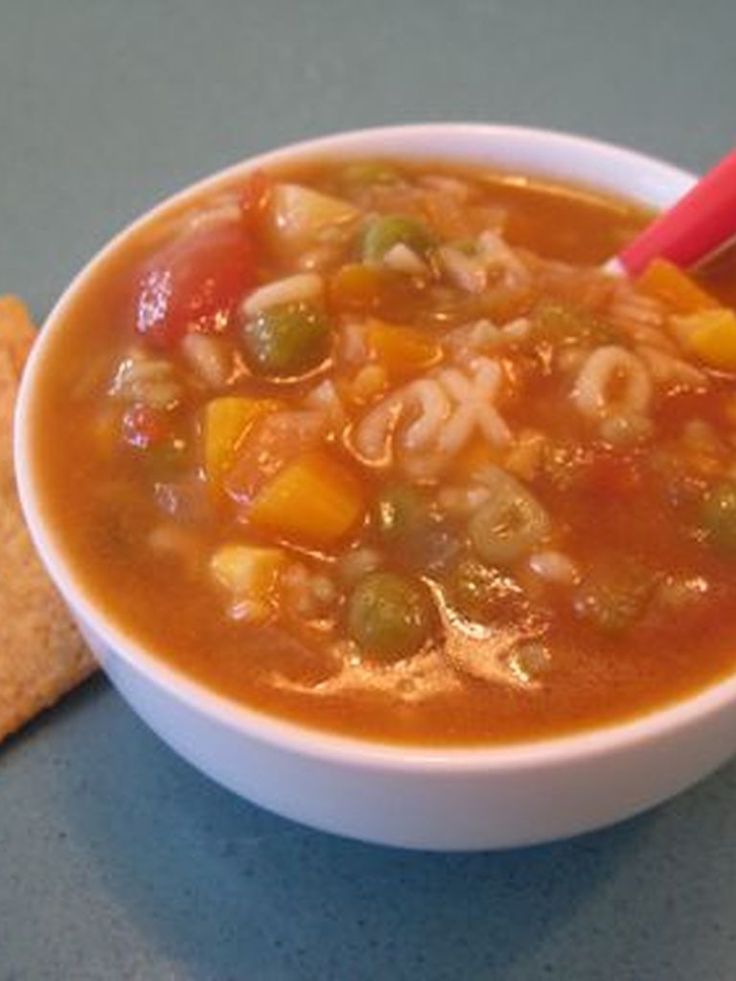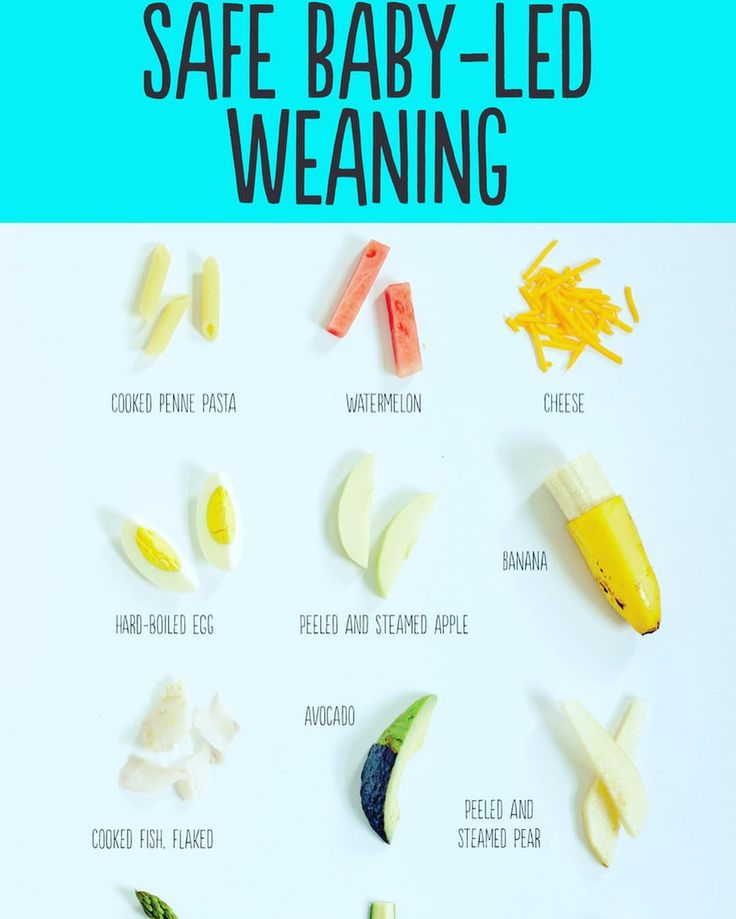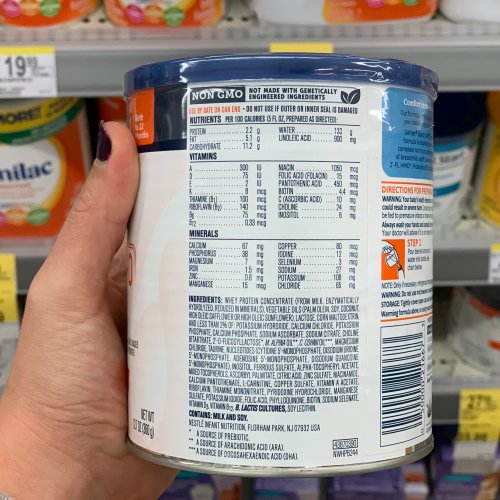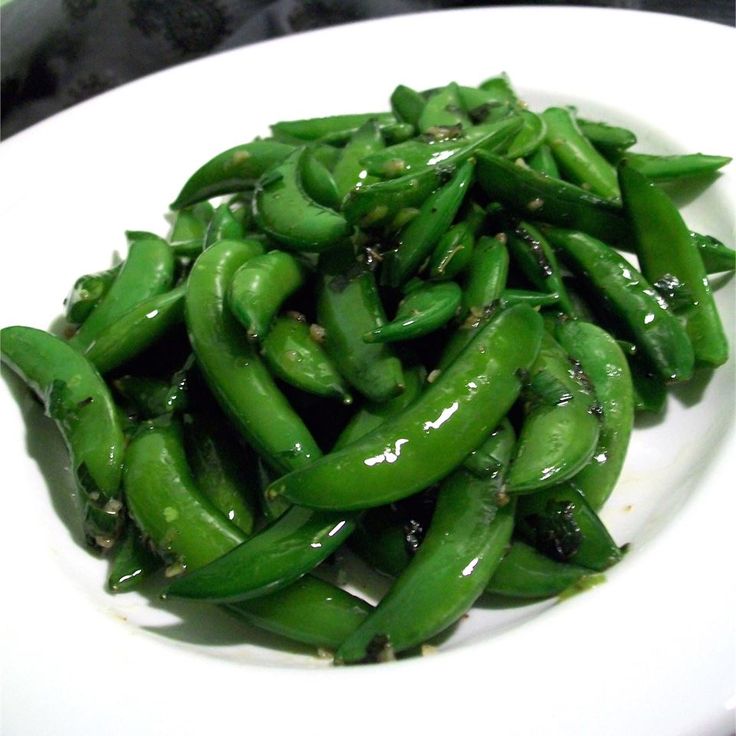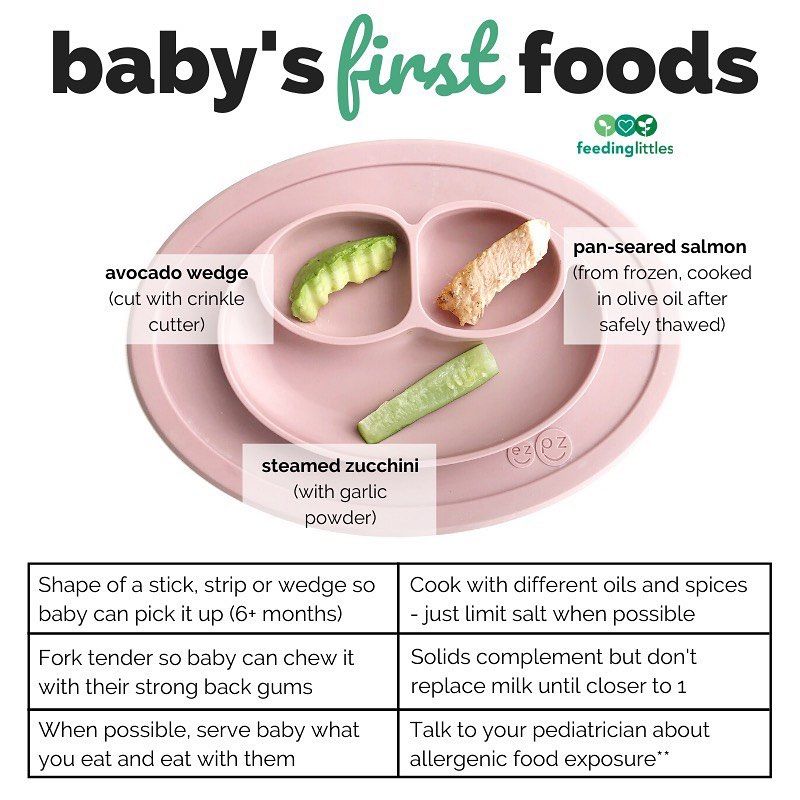Baby food sweet peas
Pea Baby Puree (4-6+ Months/Stage 1)
This Pea Baby Puree with mint is a smooth and mild baby food puree that is perfect for your baby’s first bite! Your baby will love this green puree thanks to its fresh and earthy flavor. It’s a great stage 1 baby food for 4-6 months and up.
Medically reviewed and co-written by Jamie Johnson, Registered Dietitian Nutritionist (RDN), and Lauren Braaten, Pediatric Occupational Therapist (OT).
Homemade Pea Baby Food
Don’t get caught up on what you think pea baby food is going to taste like.
Store-bought brands can be thick and lumpy with a strong acidic taste of overly cooked peas. Don’t even get me started on the smell! 🤢
But this homemade pea puree is exactly the opposite! And trust me; it tastes nothing like you expect.
I’m telling you… this pea baby food is beyond delicious. It’s heavenly!
Smooth and creamy with a mild taste and a hint of minty freshness, it’s also bright and appetizing to look at.
It will actually put a smile on your and your baby’s faces! 😁
Is it your first time making homemade baby food? Then I suggest you start this journey by reading my in-depth Guide on How to Make Homemade Baby Food. The detailed guide goes over all the important information such as the best cooking tools to have on hand, safe storage, how to know when baby is ready for solids, how to introduce purees, the best first foods for baby, and more! You can also check out my best-selling cookbook for even more information and recipes!
Pea Baby Puree Video
Watch this video to see just how easy this Pea Baby Puree is to make!
Reasons to Love this Pea Baby Puree- great baby food for 4-6+ months
- starter puree
- 3 simple ingredients
- super smooth and creamy
- delicious green puree
- easy to make — requires less than 10 minutes
- freezer-friendly
- budget-friendly
- homemade
- healthy
- organic – can easily (and cheaply) use organic peas and zucchini
- can use fresh or frozen peas
Make sure to read the recipe card below for the full ingredient list and instructions!
- Peas: They are high in fiber, folate, vitamins A, C, and K, and are a good source of protein.
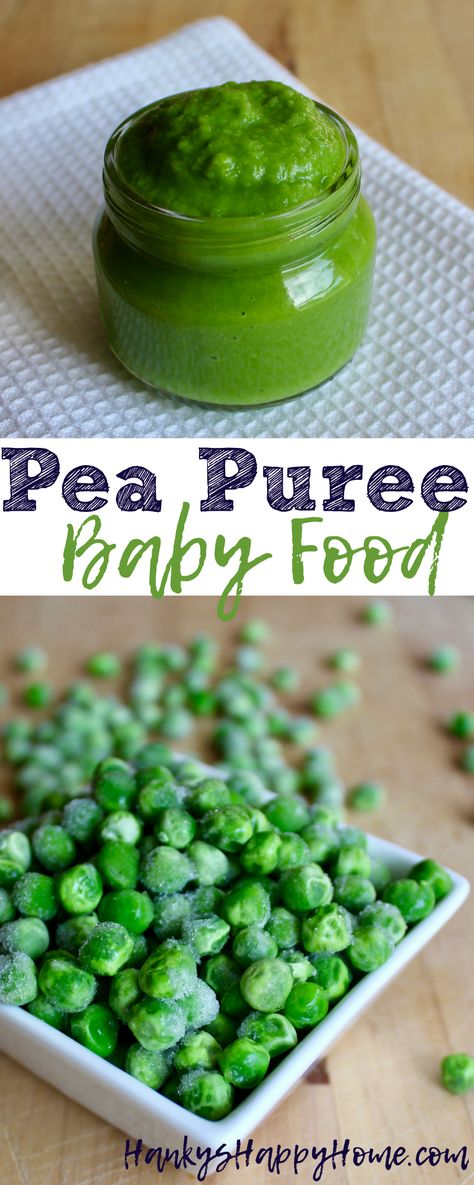 They also help promote healthy digestion and may protect against cancer.
They also help promote healthy digestion and may protect against cancer. - Zucchini: While this is a 2-vegetable starter puree, zucchini allergies are very low, so I added it to this recipe to give the peas a mild taste and a smoother, creamier texture. You can completely leave it out if you prefer. Just steam the peas as directed below.
- Mint: This is an ideal herb to add to baby food because it helps soothe an upset stomach, improves digestion, can help improve mental awareness and focus, and is rich in nutrients. However, adding mint to this puree is entirely optional.
- A good source of protein
- Contains a high amount of fiber, which helps with digestion
- Contains an array of micronutrients, such as thiamine, folate, manganese, vitamins K and C
- A good source of antioxidants
Frequently Asked Questions
When can babies eat peas?
development, which generally comes between 4-6 months of age.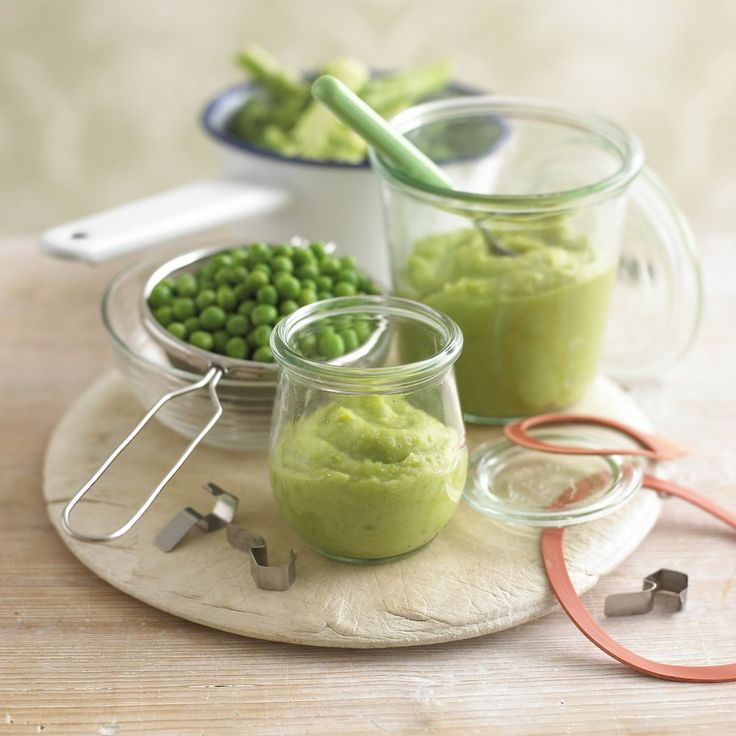 Some of the developmental milestones babies need to reach in order to start solids include: if your baby has solid control of their head and neck, if your baby has doubled in weight, and if your baby is reaching for or opening their mouth when you eat (see my guide here). Before you start your baby on purees, you should consult with your pediatrician to make sure your child is developmentally ready.
Some of the developmental milestones babies need to reach in order to start solids include: if your baby has solid control of their head and neck, if your baby has doubled in weight, and if your baby is reaching for or opening their mouth when you eat (see my guide here). Before you start your baby on purees, you should consult with your pediatrician to make sure your child is developmentally ready.
Can peas be baby’s first food?
Peas can 100% be baby’s first food if you want it to be. It is recommended to wait to introduce the top eight allergen foods to your baby once a few other well-tolerated foods have been introduced, but otherwise, foods can be introduced in any order so choose whatever you are most excited for your baby to have.
Are peas a common allergen for baby?
No, peas are not a common allergen, however, as with any food, start with a small portion and be aware of any signs that might be an allergic reaction after introducing it.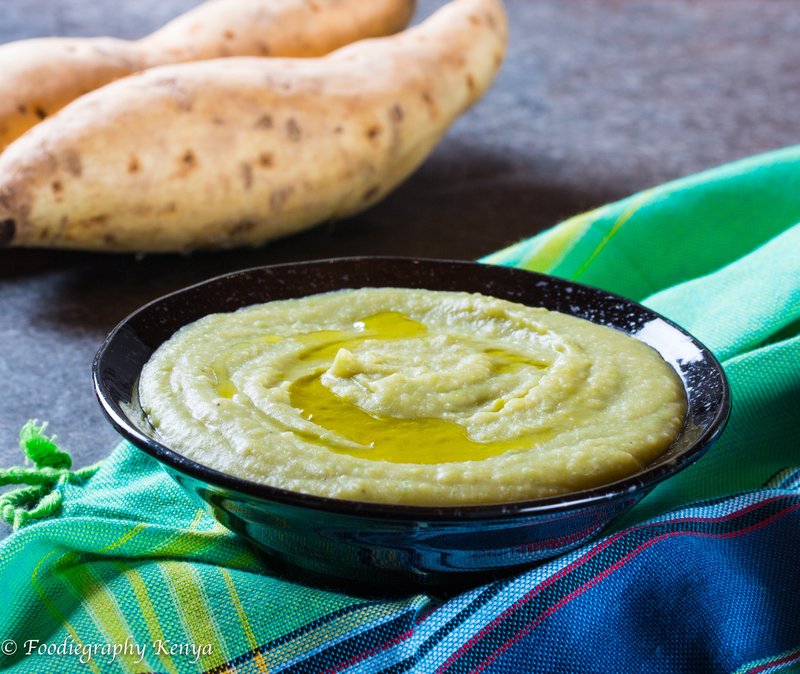
Do peas cause constipation for babies?
No, peas are not known to cause constipation in babies, and they may actually help relieve constipation in babies due to the high fiber content that makes it easier for your baby to pass stools.
Can you use frozen peas for baby food?
Yes, you can definitely use frozen peas in baby food! For this recipe, I added the frozen peas straight into the steamer basket to cook along with the zucchini. You can also freeze the peas once they are cooked and pureed.
How to Make Pea Baby Puree- Bring Water To Boil: Bring a saucepan with a little water to a boil.
- Steam Zucchini: Add chopped zucchini (optional) to a steamer basket, cover, and steam for 5 minutes.
- Steam Peas: Add the peas (fresh or frozen) and steam for another 3-5 minutes.

- Let Cool: Let it cool slightly and reserve the steamer water.
- Transfer to Blender: Transfer the cooked peas and zucchini to the blender or food processor.
- Add Mint: Add in the chopped mint or another spice.
- Puree: Puree until smooth or creamy, adding reserved water if needed to thin out the puree.
- Serve or Freeze.
- Medium Saucepan
- Steamer Basket
- Blender or Food Processor
- Freezer Tray
- Storage Containers for Fridge
- highchair
- suction bowl or baby bowl
- baby spoon
- open lid cup
- bib with catch pocket
While I love the fresh flavor of steamed peas with mint, there are several ways you can cook peas for baby food.
BEABA BabycookDoes anything sound better than a homemade baby food puree with a 15-second hands-on prep and cook time? I didn’t think so.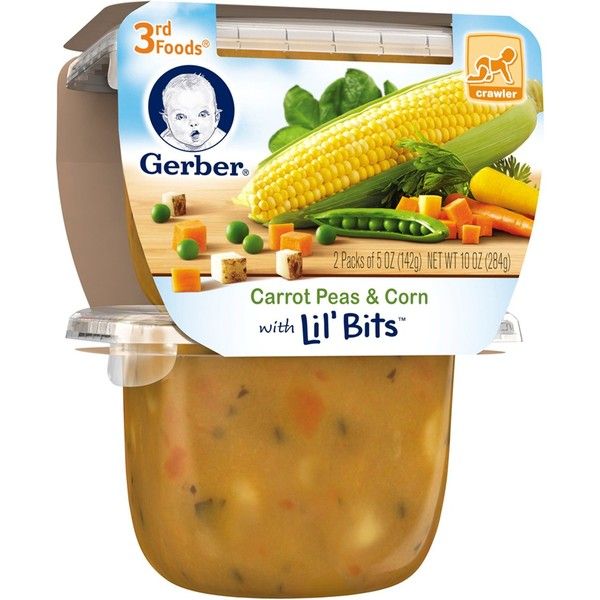 Let me introduce you to the magic of the BEABA Babycook! With the touch of a button, the Babycook will cook and blend the peas into a smooth and creamy baby food puree! It’s like magic. To make, place 2 cups of peas into the stainless steel steamer basket, and place the basket into the glass container, closing the lid. Fill the reservoir tank to a level 3, close and lock the lid. Hit the steam button and let the machine do its magic. Once steamed, transfer the peas into the glass container, leaving the water. Add in a pinch of fresh mint, if using. Close the lid, and hit the blend button for 1 minute or until the puree is smooth.
Let me introduce you to the magic of the BEABA Babycook! With the touch of a button, the Babycook will cook and blend the peas into a smooth and creamy baby food puree! It’s like magic. To make, place 2 cups of peas into the stainless steel steamer basket, and place the basket into the glass container, closing the lid. Fill the reservoir tank to a level 3, close and lock the lid. Hit the steam button and let the machine do its magic. Once steamed, transfer the peas into the glass container, leaving the water. Add in a pinch of fresh mint, if using. Close the lid, and hit the blend button for 1 minute or until the puree is smooth.
Full Review: read my full, in-depth and honest review of the BEABA Babycook Neo here! Make sure to grab 15% off your Babycook with code (BabyFoode15)!
SkilletIn a medium skillet, add 2 cups of frozen peas. Cook over medium heat for 5-7 minutes, stirring often. Puree in a blender as directed below.
Place 2 cups of peas into a medium saucepan, add enough water to cover the peas, and bring to a boil. Reduce to simmer and cook for 8-10 minutes or until tender. Puree in a blender as directed below. Note that boiling will rid the peas of some nutrients as they are leached into the boiling water, so steaming or using a skillet is preferred. If you need liquid to thin out the puree, use some of the leftover water.
Great Pea Combination PureesWhile this pea puree is delicious and satisfying by itself, it’s also easy to mix and match with other nutrient-dense baby food purees. So give these fun flavor combos a try!
- Apples
- Broccoli
- Bananas
- Pears
- Quinoa Baby Cereal
- Fennel and Peaches
- Green Beans
- Chicken
- Spinach
- Soft Tofu
- Mango
- Yogurt
WeeSprout Silicone Baby Food Freezer Tray
Our favorite freezer storage container for baby food! Made of 100% food-grade silicone and comes with a hard clip-on lid. Large 3oz sections with 2oz markings to make sure you have the right amount for your baby.
Large 3oz sections with 2oz markings to make sure you have the right amount for your baby.
View Product
Adding SpicesWhile the most popular option is adding mint to baby food, you can also add a splash of lemon or lime juice, 1/2 tsp coconut oil, 1 tsp chopped basil, 1 tsp chopped parsley, or 1/4 tsp fresh ginger.
Tip on Spices: I always add spices or herbs to my baby food purees, but you can choose to leave them out in all of your baby food. You do you! Either way, this puree will surely taste amazing.
How to Store Pea Baby FoodRefridgeratorYou can store this puree in an airtight container in the fridge for 3-4 days.
FreezerThis puree can be frozen for up to 4 months.
- Spoon puree into a freezer storage container. Do not overfill.
- Place the lid on the storage container or cover with a piece of saran wrap, and label with the date and recipe name.
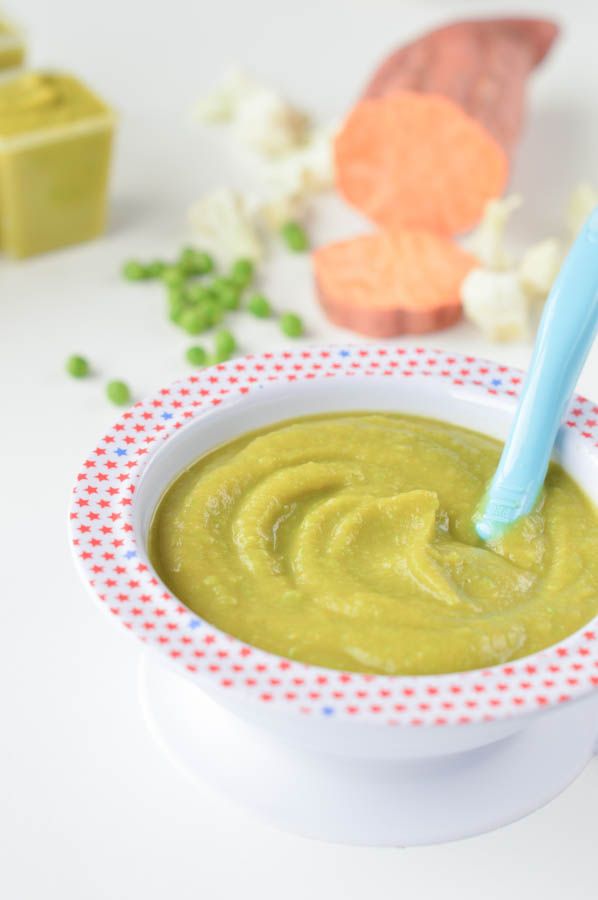
- Place the tray into the freezer and let it freeze completely — preferably overnight.
- Pop-out the baby food cubes and place them in a ziplock baggie or stasher bag. Don’t forget to relabel the baggie or stasher bag for future reference.
Need more information on how to store your baby foods? Head over to my Best Baby Food Storage Containers – Plus 6 Tips on Freezing and Thawing post!
Related
15 Stage One Baby Food Purees
Feeding Tips
- Follow your baby’s lead – when feeding purees from a spoon, sometimes there’s a tendency to keep offering bites past the point of your baby being full. Always follow baby’s cues for when they are done eating. Turning away from the spoon, closing her mouth, or pushing food away are all signs that baby is finished with the meal.
- Try adding a little seasoning or spice to purees – babies like flavor! Or consider changing the temperature of purees from time to time, to slightly warmed or slightly chilled.
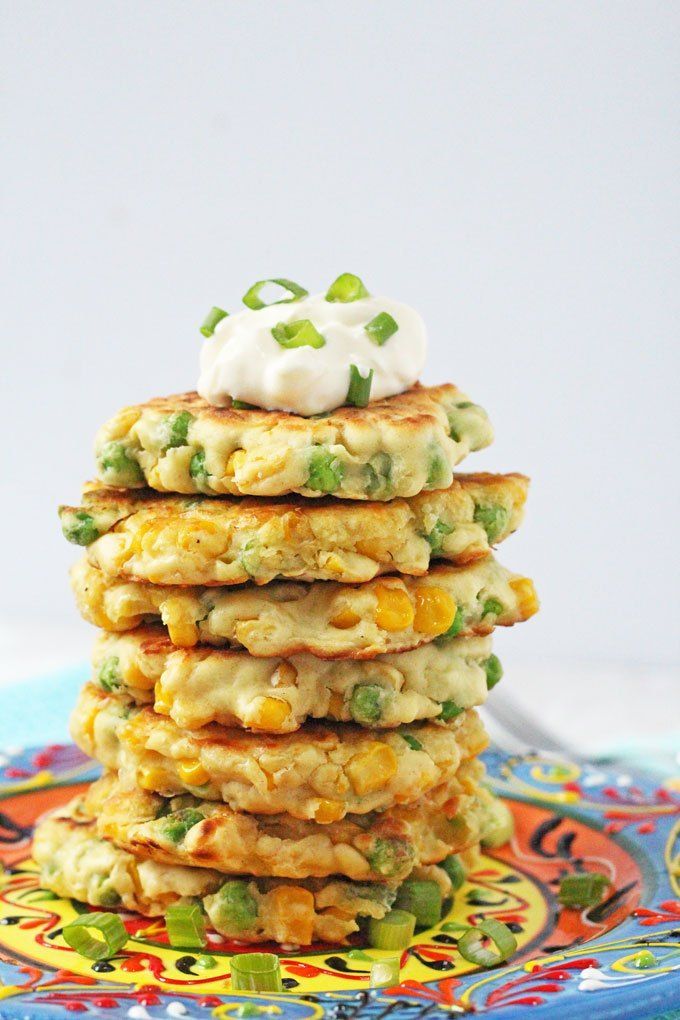 Varying these aspects adds to the sensory experience!
Varying these aspects adds to the sensory experience! - Place a small amount of puree on the tray during spoon feeding, so that your baby can dip their fingers or hands in the puree. Allowing baby to explore foods in this way helps them learn to self-feed and can help them be more willing to try new textures and foods in the future.
Or watch a shortened version of this video here.
- 2 cups peas, fresh or frozen
- 1/2 cup zucchini, roughly chopped (optional)
- 4 mint leaves, roughly chopped (optional)
Steam: In a medium saucepan, bring 2″ of water to a boil over medium heat. Place the zucchini in a steamer basket, and place over boiling water.
 Cover and steam for 5 minutes.
Cover and steam for 5 minutes.Add Peas: Add in the peas, and steam for an additional 3-5 minutes. Reserve steamer water. Let cool slightly.
Blend: Add the zucchini, peas and mint leaves to a blender or food processor and puree for 1 minute or until you have achieved the desired texture. If the puree is too thick, add in 1/4 cup of the reserved steamer water until you have the right consistency.
Serve: let cool and serve to your baby or freeze for a later meal.
Age: 4-6 months and up
Yield: 15 ounces
Note on Zucchini: while this is a 2 vegetable starter puree, zucchini allergies are very low, so I added it to this recipe to give the peas a mild taste and smoother texture.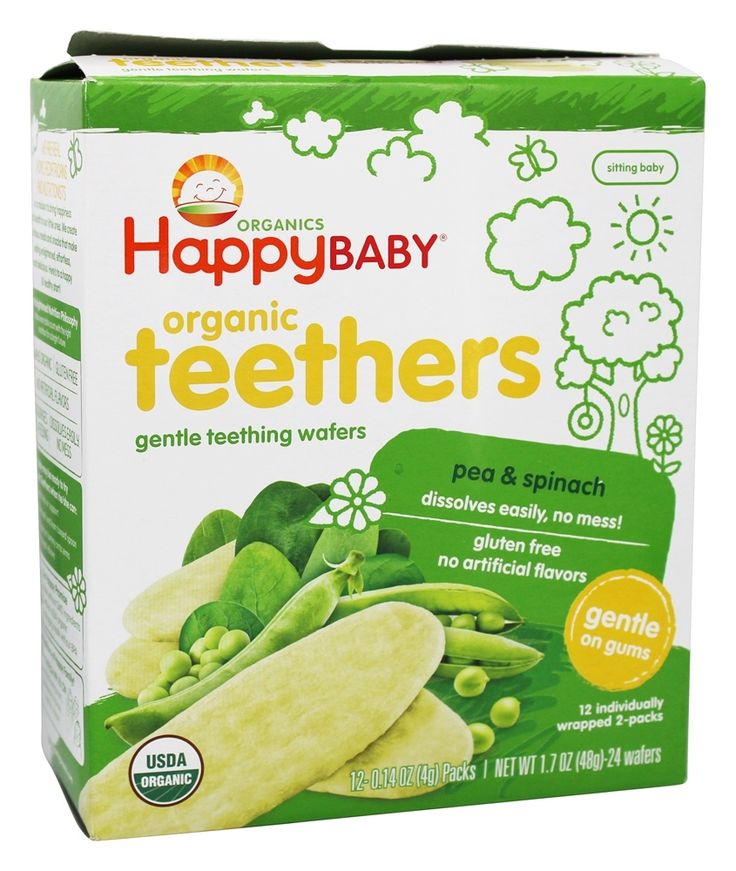 You can completely leave them out if you prefer. Just steam the peas as directed.
You can completely leave them out if you prefer. Just steam the peas as directed.
Additional Spices: instead of the mint, feel free to use a splash of lemon or lime juice, 1/2 tsp coconut oil, 1 tsp chopped basil, 1 tsp chopped parsley or 1/4 tsp fresh ginger.
Storage: Fridge – store in an airtight container in the fridge for up to 4 days. Freezer – can be frozen for up to 4 months.
Blender
Freezer Tray
Saucepan
Tripp Trapp High Chair
Bumkins Baby Bowl
Serving: 1ounce, Calories: 15kcal, Carbohydrates: 2.9g, Protein: 1.1g, Fat: 0.1g, Sodium: 1mg, Potassium: 57mg, Fiber: 1g, Sugar: 1.2g, Calcium: 5mg
Did you make this recipe?
Tag @babyfoode on Instagram and hashtag it #babyfoode!
Pin <em>Recipe</em> Email <em>a Friend</em>
Easiest Pea Puree (A Simple Side or Baby Food)
byAmy Palanjian
Updated
Jump to RecipeThis post may contain affiliate links.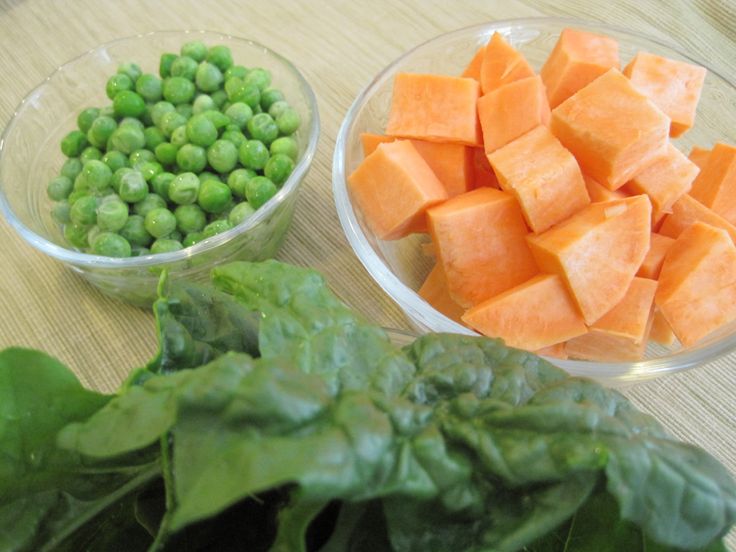 If you shop from one of our links, we may earn a commission.
If you shop from one of our links, we may earn a commission.
This super simple Pea Puree is so fresh and delicious. It’s an easy baby food or side dish that you can add flavor to as desired. Plus, find ideas for other purees to combine it with, storage tips, and freezing info.
Pea Puree
Turning frozen peas into simple, fresh puree is one of the first foods I made for my kids. It’s so easy, freezes really well, and combines well with other baby foods too.
Plus, you don’t need any fancy cooking skills to pull this off—just a bag of frozen peas and a blender!
This recipe has a very straight forward method and is very quick to make. It’s perfect if you want to make a few servings of baby food at once to have on hand for the coming days or even to send to daycare.
You can also use it as a side dish for the whole family too, either plain or with some of the flavor additions.
TIP: I’m all about keeping things fuss-free when feeding babies and making vegetables for kids.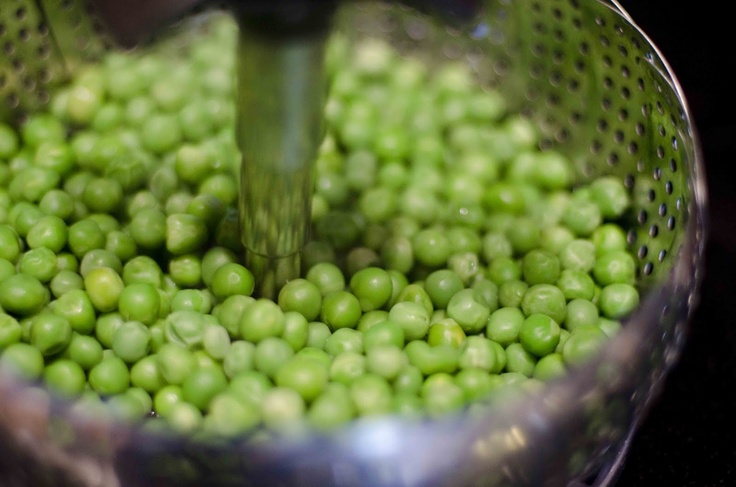 Here’s a baby food chart that might help you get more ideas too.
Here’s a baby food chart that might help you get more ideas too.
Ingredients You Need
To make this recipe you just need…peas! I use frozen peas—organic or regular, depending on what I can find at a good at my local stores. The puree will taste best with peas that are naturally sweet and not crazy starchy, so if you have a brand you prefer eating yourself as whole peas, use that one.
(There’s a surprising variety of flavor when it comes to frozen peas!)
TIP: “Petite” peas tend to be sweeter and more tender, so if you see those, I’d recommend them.
Step-by-Step Instructions
Here’s a look at the basic process involved in making this puree. Scroll down to the bottom of the post for the full information.
- Measure out your frozen peas. (I use two cups since that’s a good amount for my blender.)
- Add to a pot with water and bring to a boil.
- Drain.
- Blend!
TIP: You can add avocado, butter, or olive oil to add healthy fats and flavor to the pea puree.
Baby Food Storage Tips
I like to use these small airtight containers from Wean Green. The serving size that is right for your baby may vary according to their age and appetite, so you may have to adjust once you see how baby likes this.
You can store this pea puree for baby in the fridge or freezer.
Best Tips for Success
- Use organic peas if desired.
- Add 2 tablespoons avocado, 1 teaspoon olive oil, or 1 teaspoon butter to add healthy fats and flavor.
- Combine with whole milk plain yogurt for a simple baby snack.
- Combine with Applesauce or Banana Puree and serve in a baby food reusable pouch.
- Use reduced sodium vegetable or chicken stock and add a little Parmesan to make this as a simple side for the whole family.
- Store in small airtight containers in the fridge for 3-5 days. Serve cold or slightly warm.
- Freeze in a silicone ice cube tray overnight. Transfer to a freezer bag, remove as much air as possible, and freeze for up to 6 months.
 Thaw overnight in the fridge or at room temperature.
Thaw overnight in the fridge or at room temperature. - Find my best tips on freezing baby food here.
- Find easy No-Cook Baby Food Recipes here, my Broccoli Puree and easy Carrot Puree.
I’d love to hear your feedback on this recipe, so please comment below to share!
This post was first published September 2020.
Prep Time 2 minutes
Cook Time 5 minutes
Total Time 7 minutes
Author Amy Palanjian
Cuisine American
Course Baby Food
Calories 39kcal
Servings 6
- ▢ 2 cups frozen peas
Add the peas to a medium pot and cover with about an inch of water.
Place on the stove over high heat. Bring to a boil, then remove from heat.
Drain in a colander.
Add to a blender and blend smooth, adding 1/4-½ cup water (or sodium-free broth) to create a smooth baby food puree. (Less liquid will create a thicker puree, more liquid will create a thinner one.
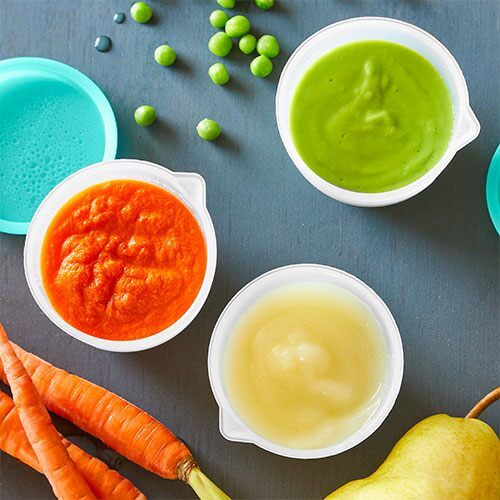 )
)Serve or store for future meals.
Vitamix Blender
Silicone Ice Cube Tray
Storage Containers
- Use organic peas if desired.
- Add 2 tablespoons avocado, 1 teaspoon olive oil, or 1 teaspoon butter to add healthy fats and flavor.
- Combine with whole milk plain yogurt for a simple baby snack.
- Combine with Applesauce or Banana Puree and serve in a baby food reusable pouch.
- Store in small airtight containers in the fridge for 3-5 days. Serve cold or slightly warm.
- Freeze in a silicone ice cube tray overnight. Transfer to a freezer bag, remove as much air as possible, and freeze for up to 6 months. Thaw overnight in the fridge or at room temperature.
- Use reduced sodium vegetable or chicken stock and add a little Parmesan to make this as a simple side for the whole family.
Calories: 39kcal, Carbohydrates: 7g, Protein: 3g, Fat: 1g, Saturated Fat: 1g, Polyunsaturated Fat: 1g, Monounsaturated Fat: 1g, Sodium: 2mg, Potassium: 118mg, Fiber: 2g, Sugar: 3g, Vitamin A: 370IU, Vitamin C: 19mg, Calcium: 12mg, Iron: 1mg
Tried this recipe?Rate in the comments and tag @yummytoddlerfood on IG!
Related Posts
Related Products
Happy Family Meals (Meal Plans)
Buy Now
Happy Family Meals (Vol 2)
Buy Now
Yummy Toddler Snacks
Buy Now
Yummy Baby Food
Buy Now
Share it with the world
FacebookTweetPinFiled Under
Seeds sweet peas Villa Roma scarlet: variety description, photo
Chosen: 25 cm 0. 5 g Red
5 g Red
Height
20-35 cm25 cm
Group of goods: seeds
Available
Type of goods: packaged seeds
Sending period: 1-3 working days
Article: 762850
Know in packaging: 9 9 9 0.5 gr.
Bonuses when purchasing: +4
Add to my family garden
+4 bonuses when buying
Version for printing
To recommend this product to friends
Characteristics
Height: cm
9000 Group: Flowers
Color: Red
Fragrance strength: 3
Suitable for cutting: No
Planting interval: 20 x 30 cm
Life cycle: annual
Manufacturer: Russian garden
Flowering period: June-September
Location: Sun
Use: for open soil
Description
Sweet peas Villa Roma Scalet is a variety that we are looking forward to presenting to you! It can truly be called unique, because Villa Roma Scalet wins all sorts of awards at international competitions. For example, it is he who owns the Fleuroselect 2011 gold medal. So what is so unusual about him? nine0099 Sweet peas Villa Roma Scalet has a bush type of habit that can be grown in mixborders and flowerbeds, in pots or containers. In a word, you finally have a wide choice of places for planting such an unpretentious plant! Inflorescences are very bright, ruby red. In each inflorescence - 3-4 flowers, neatly gathered together. The flowers have a rich aroma, which is especially valuable in compositions near the summer veranda or in the recreation area.
Sweet peas Villa Roma Skalet blooms for about 3 months. You can combine it with both bright colors (yellow, blue, purple) and pastel colors (lilac, white, cream and even blue). Therefore, despite all the richness of the presented color, it will be universal in the garden. Most importantly, don't be afraid to experiment! Also, already now you can think about, perhaps, your long-term mixborder can be supplemented with Villa Roma Scalet.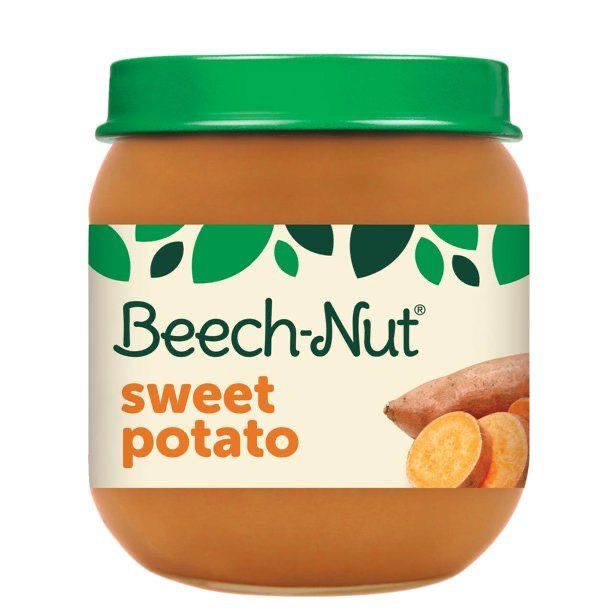 nine0099 Peas should be planted for seedlings in late March - early April. It does not need to dive, but immediately after the spring frosts, plant it in a permanent place. Before planting, soak the seeds for a day in water so that they germinate faster. Peas love moist soils with good nutrition. Therefore, do not forget to add compost and fertilizers to the soil.
nine0099 Peas should be planted for seedlings in late March - early April. It does not need to dive, but immediately after the spring frosts, plant it in a permanent place. Before planting, soak the seeds for a day in water so that they germinate faster. Peas love moist soils with good nutrition. Therefore, do not forget to add compost and fertilizers to the soil.
Customers choice
Broccoli Russian Size®
Code: 771903
Pack quantity: 30 pcs. nine0003
Availability: In stock
Shipping time: 1-3 business days
49
Moonstead Lavender
Code: 4866
Pack quantity: 1 pc.
Availability: Spring
Shipping time: March 20 to May 30
279
Geranium Elke
Code: 2881
Pack quantity: 1 pc.
Availability: Spring
Shipping time: 20.03 to 30.05
289
Fritella Potatoes
SKU: 4497
Pack Quantity: 25-30 Tubers
Availability: Spring
Shipping Time: 20. 03 to 30.05
03 to 30.05
299
Tuberose Pearl
Code: 32613R
Pack quantity: 3 pcs.
Availability: Spring
Shipping time: March 20 to May 30
249
Primula Elisabeth Kileley
Code: 2160
Pack quantity: 1 pc.
Availability: Spring
Shipping time: March 20 to May 30
479
Potato Grande
SKU: 24897
Quantity per pack: 25-30 tubers
Availability: Spring
Shipping time: From 20.03 to 30.05
319
Eremurus Line Dance
Code: 22155
Pack quantity: 1 pc.
Availability: Spring
Shipping time: 20.03 to 30.05
399
Panicled phlox Natasha
Code: 117794
Pack quantity: 1 pc.
Availability: Spring
Shipping time: March 20 to May 30
289
Cherry Persistent
Code: 5999
Pack quantity: 1 pc.
Availability: Spring
Shipping time: March 20 to May 30
389
Santa Claus art kit
Code: 31293
Pack quantity: 1 pc.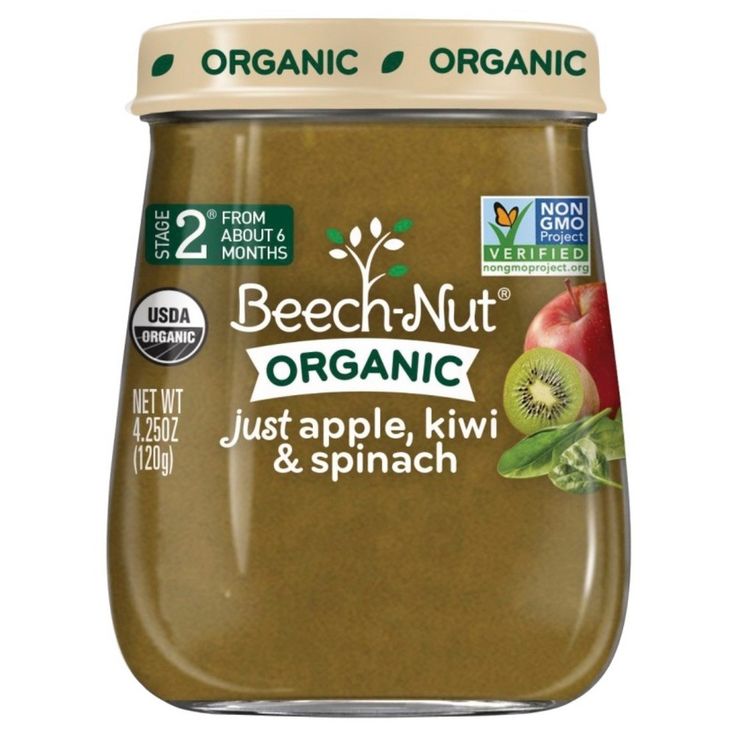
Availability: In stock
Shipping time: 1-3 business days
399
299.25 399
Spungram Winter-120 Aquamarine 1.6 х 12m (covering...
Code: 73342
Quantity per pack: 1 pcs. 2579
Onion sets Setton
Code: 3142
Pack quantity: 0.5 kg.
Availability: Spring
Shipping time: March 20 to May 30
249
Rosa Kerio
Code: 4054
Pack quantity: 1 pc.
Availability: Spring
Shipping time: March 20 to May 30
329
Raspberry Gusar
Code: 9741
Pack quantity: 1 pc.
Availability: Spring
Sending time: From 20.03 to 30.05
189
Oriental hellebore Double Eggplant with white cane...
Code: 9366
Pack quantity: 1 pc.
Availability: Spring
Shipping time: March 20 to May 30
599
Lily Fusion
Code: 6529
Pack quantity: 1 pc.
Availability: Spring
Shipping time: March 20 to May 30
169
Lilia Lovely Day
Code: 27156
Pack quantity: 1 pc.
Availability: Spring
Shipping time: March 20 to May 30
119
Potato Ladushka
SKU: 5034
Quantity per package: 25-30 tubers
Availability: Spring
Shipping time: From 20.03 to 30.05
299
Blackberry Black Satin
Code: 1222
Pack quantity: 1 pc. nine0003
Availability: Spring
Shipping time: March 20 to May 30
299
This function is temporarily unavailable, we apologize for the inconvenience!
5f99e80b-23fc-11e2-5e89-003048c4d316
Long live the king! How to grow sweet peas? | Kitchen garden | Dacha
Dina Kudryavets
Estimated reading time: 7 minutes
4984
nine0117 "AiF.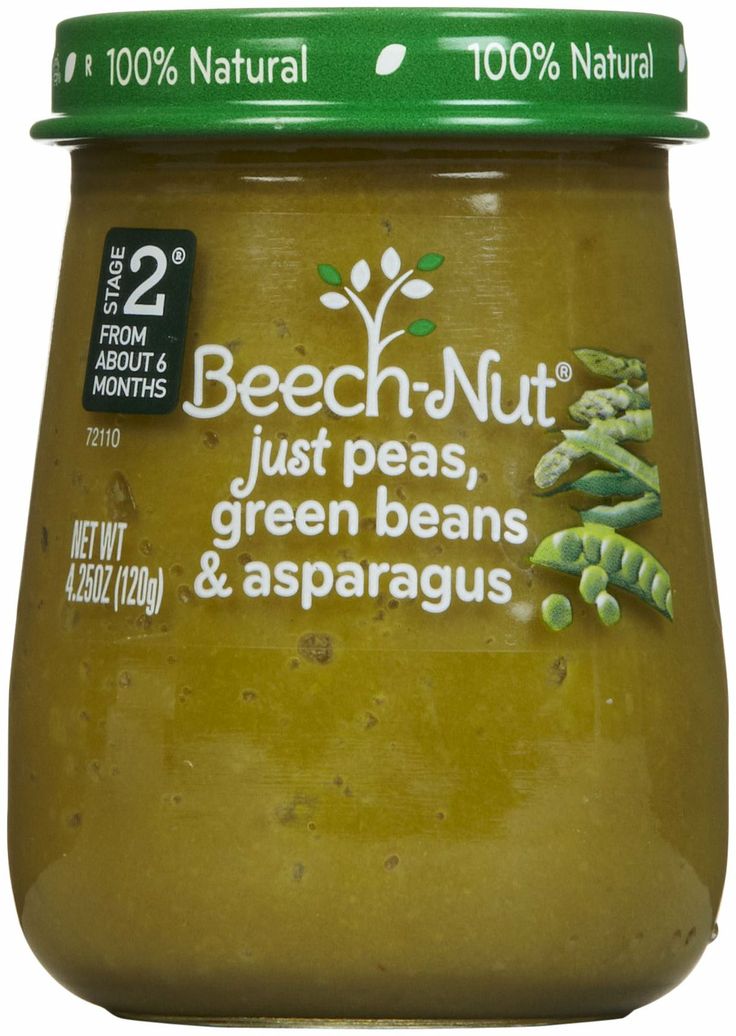 At the cottage" No. 13. Margarita Sukhankina: "I really wanted a country house" 07/05/2013
At the cottage" No. 13. Margarita Sukhankina: "I really wanted a country house" 07/05/2013 Photo: www.globallookpress.com
Palace coup
| By the way | |
|---|---|
| In order for peas to bloom profusely, planting containers are filled with loose, nutritious (but without fresh organic fertilizers) soil with a neutral reaction (pH 7–7.5). Slowly soluble fertilizers are added to the bottom layer and thoroughly mixed with the soil. | |
Sweet peas (or fragrant rank) deservedly received the title of the “king of letniks”. First of all, for an unusually rich, but delicate aroma, a huge variety of flower colors and a remarkable ability to bloom until frost. In addition, in many countries, sweet pea societies were patronized by queens or members of royal families. Alas, in our time, only in England, they still touchingly preserve the tradition of having this plant in the gardens and breeding it. nine0003
Alas, in our time, only in England, they still touchingly preserve the tradition of having this plant in the gardens and breeding it. nine0003
Unfortunately, gardeners' love for sweet peas played a cruel joke on him. As soon as breeders set themselves the task of making it a mass ornamental culture, its former incomparable aroma became a rarity. It was preserved only in varieties close to wild plants: with white, pink and lavender flowers of the simplest form. Narrowed the scope of peas and the predominance of high - about 200 cm - varieties that must be tied to a support, and therefore it is difficult to grow on a balcony or loggia. In addition, many other interesting annual plants have recently appeared, the seedlings of which are widely available. nine0003
Heirs to the throne
| Attention | |
|---|---|
| In dry weather, sweet peas need to be watered abundantly: at this time, they form a lot of fruits, and flowering weakens. | |
Still, sweet peas are worth babysitting, so beautiful are their moth-like flowers in a wide variety of colors. Moreover, recently new low garden varieties and groups suitable for large pots and hanging baskets have appeared. For example, ‘Angels Blush’ (‘Angels Blush’) are well bushy plants 20–25 cm high, completely covered with bright white-pink medium-sized flowers. This variety is also distinguished by the fact that it has short peduncles, so the flowers rise very low above the leaves, as if looking out of them. The garden group ‘Bijou’ (‘Bijou’) combines plants 25–30 cm high with large flowers arranged in 4–5 pieces on a strong peduncle. nine0003
The most common mix of colors on sale is ‘Bijou Mixed’. It is best planted in discounts and large containers. 'Patio Mix' is a group that has recently appeared in catalogs and is very similar to 'Bijou', but the plants included in it are slightly taller - 30–35 cm, with powerful peduncles, each of which bears 4 fairly large flowers with a light fragrance.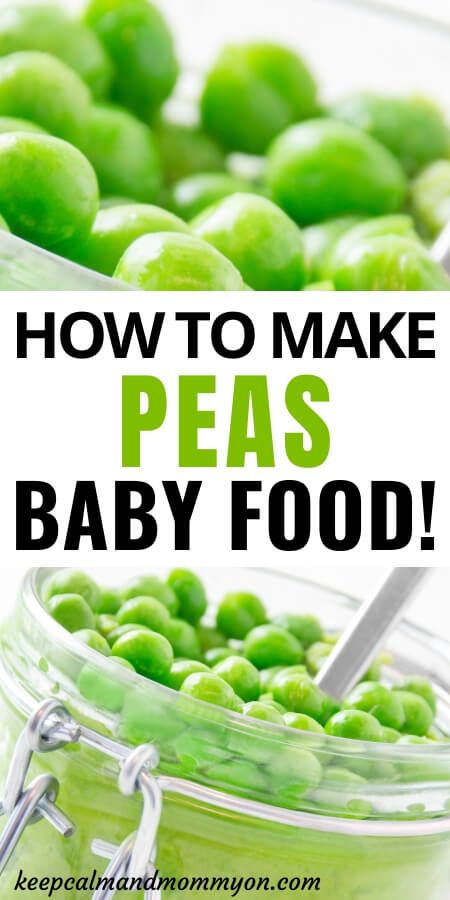 They are recommended for pots, containers and borders. ‘Snoopy Mixed’ (‘Snoopea Mixed’) is a mixture of compact, highly branched plants 30 cm high. They do not form tendrils, which makes them look neat. They are used as ground covers, as well as for containers and window boxes. nine0003
They are recommended for pots, containers and borders. ‘Snoopy Mixed’ (‘Snoopea Mixed’) is a mixture of compact, highly branched plants 30 cm high. They do not form tendrils, which makes them look neat. They are used as ground covers, as well as for containers and window boxes. nine0003
‘Sugar n Spice’ is a fragrant dwarf sweet pea specially bred for hanging baskets: it reaches no more than 20 cm in height! Thanks to short peduncles, plants form real balls of bright flowers of different colors, including bicolors. Another series for hanging baskets - 'Sweetie Series' - 25 cm tall plants with small flowers of carmine pink, dark cherry, lavender, salmon and white. ‘Villa Roma Seriez’ (‘Villa Roma Series’) is a completely new dwarf (35 cm high) bush-type sweet pea with large fragrant flowers. Flower colors: carmine, light blue, light pink, crimson, hot pink, red, white and white with a pink sail. Looks great in patio pots and/or large containers. nine0003
Most of the indicated peas in packages of English firms are sold in garden centers or chain stores.
The road to the throne
Sowing sweet peas for seedlings is carried out in March-April, and in open ground - in mid-May. The most difficult thing in its cultivation is the germination of seeds, as they have a very dense shell. To destroy it, before sowing, they are poured with a small amount of warm (40–60 ° C) water so that it only slightly covers the seeds, and left in it for a day. Only seeds with a light shell cannot be placed in water. Instead of soaking them, you can rub them between two layers of coarse sandpaper or destroy the skin in one place with a nail file. nine0003
Low grades are placed immediately in seedling pots or in a balcony box and container. In one pot with a diameter of 10 cm, 2-3 soaked seeds are sown. 10-15 plants are planted in a basket with a diameter of 35 cm or sown with a margin to get about the same number of seedlings. The seeds are laid out and sprinkled with a 1 cm layer of soil, after which they are poured abundantly. When sown in open ground, it is better to spread the seeds in nests of 2–3 pieces at a distance of 15–20 cm. complex fertilizers will bloom until September. nine0003
See also:
- Annuals: what new varieties have appeared? →
- Three components of summer: all about peonies →
- Miracles in containers →
Next article
You may also be interested in
- What to plant in the country: 10 fashion trends nine0448
- All varieties of phlox: from exotics to funny simpletons
- Heralds of Spring. How to grow erantis in the garden nine0448
- Who's new? (07.


